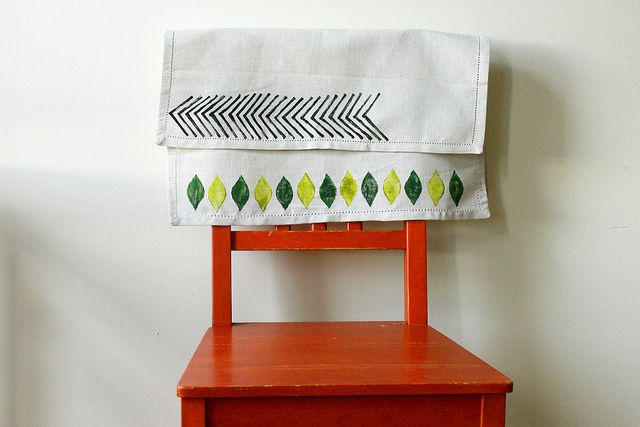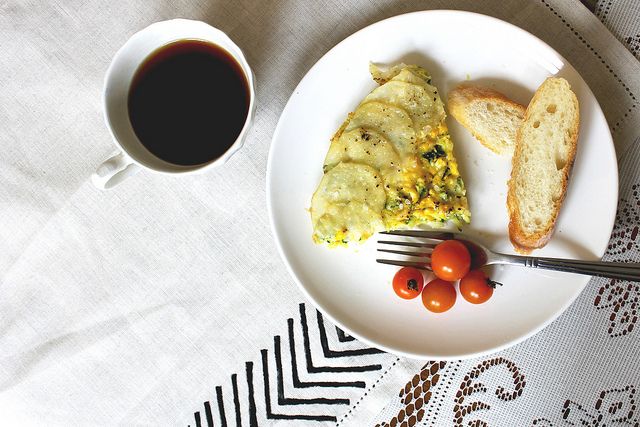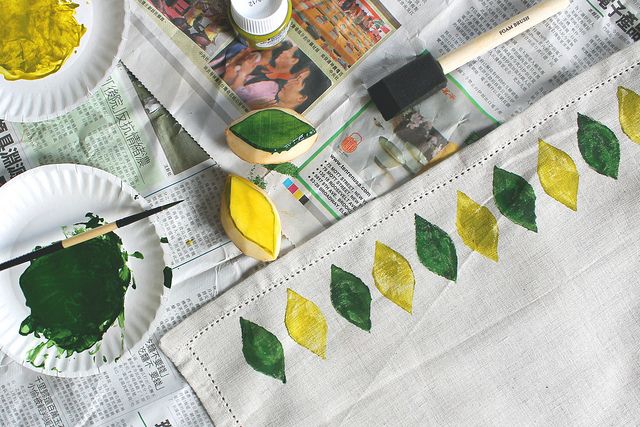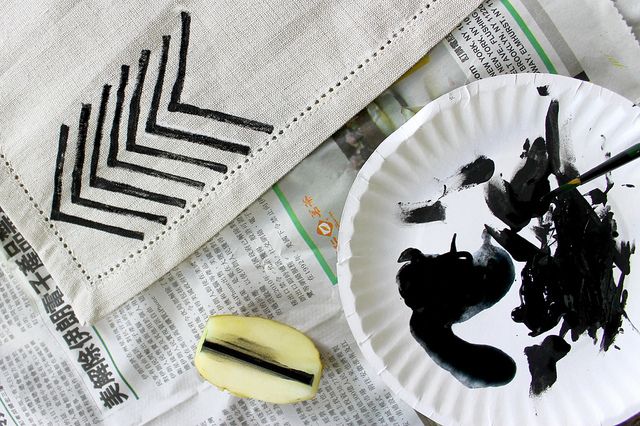Every other week, Anna Hezel talks about the innovations, decorations, and other quiet touches that make a party memorable.
Today: Use potatoes to stamp some personality onto plain linens.

One of my favorite party tricks is to mix and match linens to lend texture and color to a table spread. I love the way graphic prints look layered over solid colors or even lace, and a few pretty dishtowels or small tablecloths can go a long way.
If you're worried that your linen collection is too lackluster or unvaried to pull this off, there's an easy fix for that. Pick up a couple potatoes from the grocery store and fabric paints in a great color scheme, and brush off those elementary school craft skills. You'll be producing your own crisp, graphic prints in no time.
More: Paint your own china, too.
This is a great project to do if you have some plain dishtowels or tablecloths around, but it's also easy to find basic linens like this on clearance racks or at vintage stores. Choose paint colors that complement your dishes and your home, and sketch your patterns out on a piece of paper before you begin.

Supplies:
- fabric paints in the colors of your choice
- a few potatoes
- plain, light-colored linens
- a chef's knife and a paring knife
- newspapers
1. Spread some newspapers out to protect your workspace from paint. Spread your tablecloth or cloth napkin out on top of the newspapers. I ironed my cloth beforehand to create a smoother surface, but this isn't necessary.
2. Cut a pattern for your stamp out of some paper. You can even trace a shape (a leaf, diamond, arrow, teardrop) off of your computer screen, and then cut the shape out of the paper.

3. Using a large, sharp chef's knife, cut a potato in half lengthwise, being careful to create flat, smooth surfaces. Blot any excess moisture from the potato's exposed surface with a paper towel, and lay your paper pattern on the potato's surface. Using a sharp paring knife, cut away the potato around the shape, creating a stamp. Once you remove the paper pattern, you can can reuse it to make a matching stamp from the other half of the potato if you plan to alternate colors.

4. Pour a little bit of fabric paint onto a small plastic or paper plate. Dip your potato stamp into the paint and wipe off any big globs. Place stamp on fabric, and apply a little bit of pressure so that the paint sinks in. If your stamp leaves any white space remaining on the cloth, you can fill this in with a paintbrush. Repeat until the pattern extends across the hem of the cloth.







See what other Food52 readers are saying.